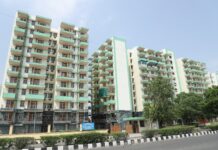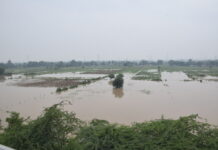[vc_row][vc_column][vc_column_text]
Manoj Mishra, a dedicated environmental activist, who spent his entire life advocating for the preservation of the Yamuna river in Delhi, passed away on 4th June, 2023. Known for his campaign “Yamuna Jiye Abhiyan” (Let Yamuna Live), Mishra aimed to raise awareness and inspire action to rejuvenate the life line of Delhi. In honor of his memory on this Environment Day, AltLipi revisit an interview conducted with Mishra in September 2022 and January 2023, where he shared his journey and perspective on the Yamuna.
What inspired you to initiate the revival of Yamuna?
My journey to protect the Yamuna river was not triggered by any specific event. When I arrived in Delhi in 1996, I was unaware of the significance of the river. However, living near the river bank in Mayur Vihar made me realize the sorry state of the Yamuna. This realization prompted me to learn more about the river and take action, which eventually led to the formation of the “Yamuna Jiye Abhiyan” after ten years.
Could you please share the journey to the formation of Yamuna Jiye Abhiyan?
Between 2006 and 2007, extensive research on the Yamuna river was conducted. My team and I visited Hathinikund, where we discovered the true crises facing the river. We identified two key issues: the decreasing water flow caused by diversions and encroachments in the floodplain, which were suffocating the river’s vitality. A presentation on the Yamuna crisis was made, inviting individuals working on river and water issues in Delhi. Commander S Sinha, Samad Singh and HS Pawar were made patron and I was made convenor for the mission as I coined and initiated the idea. A collective effort 20 people involving 6-7 organizations initiated the mission.
What propelled you to name it “Yamuna Jiye Abhiyan“?
The campaign’s name, “Yamuna Jiye Abhiyan” was chosen to reflect the essence of a continuous and thriving river. The word “Jiye” in Hindi implies perpetual living. My team and I wanted to emphasize that a river should sustain its existence indefinitely. Therefore, they opted for a name that captured the idea of a living Yamuna.
What are your views on clean Yamuna project?
I strongly believe that the term “clean” does not appropriately fit for the revival of a river. In over 200 presentations, we emphasized that a clean river is not the ultimate solution. The concept of cleaning rivers arose in 1984 with the Ganga cleaning mission and then in 1994 with the Yamuna cleaning initiative. I argued that rivers have the inherent ability to cleanse themselves naturally. Instead, the focus should shift to making rivers healthy. A healthy river can also be clean, but a clean river does not necessarily imply a healthy ecosystem. The river’s floodplain is as crucial as the river itself, and any encroachments on it directly impact the river’s health.
Furthermore, a river is always a flowing water. So a river can be called healthy river with its own biodiversity and ecosystem. We raised all such subjects in front of many, also in front of President APJ Abdul Kalam in March 2007. But, despite all these efforts nothing turned fruitful. After that we made several presentations and tried what we could for Yamuna .
Are you really hopeful that Yamuna will live again?
I firmly believe in the rejuvenation of the Yamuna. During the COVID-19 lockdown in 2020, heavy rainfall in Uttarakhand brought untainted water to the Yamuna, as industries were closed and pollutants were absent. We could see the surface of the river clearly. The river, free from industrial pollution, exhibited signs of natural revitalization. I found this as proof that if industrial pollutants are curtailed, the river can heal itself and regain its vitality.
How do you look at the efforts made by both the Delhi and Central government in this regard?
I acknowledge the intentions of both the Delhi and central governments to address the Yamuna issue. However, I express disappointment with the lack of effective action on the ground. In 2015, the National Green Tribunal (NGT) presented a comprehensive roadmap for rejuvenating the Yamuna, but the recommendations were not implemented. Although a monitoring committee was established in 2018, subsequent changes in governance resulted in scattered efforts. I emphasize the importance of comprehensive and sustained initiatives for long-lasting results.
What’s your opinion on the treated sewage water being used to make artificial ponds and wetlands in Delhi nowadays?
I look at it as a positive impact. Utilizing treated wastewater to minimize pollutants entering the Yamuna is certainly a good step. However, there is also the need for a well-planned and efficiently executed strategy to ensure not a single drop of polluted water finds its way into the river. Only then can a noticeable difference be made.
What message would you deliver to the society and government authorities at large?
Yamuna is lifeline of Delhi. If Yamuna lives, Delhi lives. If Yamuna gets sick the National Capital would be sick. So make Yamuna healthy.
[/vc_column_text][/vc_column][/vc_row]
Disclaimer: We do undertake rigorous checks on content provided by contributors before publishing the same. If you come across some factual errors, kindly bring this into our notice and we shall review your objection and claim as per our policy and display correction credits and corrections on the article itself.
The opinion expressed in the article is of the writer. Writer is a freelance journalist/journalist based in Delhi




























